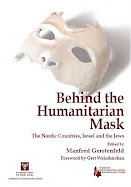Cultural cleansing.
Destroying statues of Buddha is anything else but unique, burning churches and temples is neither, the cultural and ethnic cleansings under the sword of Islam is perhaps one of the worst crimes against humanity and humanity's cultural heritage.
From: American Thinker.
According to the World Encyclopedia, cultural genocide is a term used to describe the deliberate destruction of the cultural heritage of a people or nation for political or military reasons. Since coming to power twenty-nine years ago, the Islamic Republic of Iran has been in a constant battle with the Iranian people as well as her culture and heritage.
Over its life span, the Islamic Republic zealots have tried innumerable times to cleanse the pre-Islamic Persian heritage in the name of Islam. First, they declared war against the Persian New Year or "Nowruz", and then, they attacked other Persian traditions and customs. In 1979, Khomeini's right-hand man, the Ayatollah Sadegh Khalkhali, tried to bulldoze Iran's greatest epical poet Ferdowsi's tomb and Persepolis palace. Fortunately, the total bulldozing of the relics of the palace was averted by Iranian patriots who wished to preserve their heritage; who literally stood in front of the bulldozers and did not allow the destruction of this heritage of humanity. The Islamic Republic of Iran, which holds in great contempt any non-Islamic belief or heritage, has embarked on destroying many pre-Islamic archeological sites in Iran such as Pasargad and Persepolis -- some of humanity's most prized cultural heritage, on the pretext of building a dam. The heinous destruction of the two Buddha statues by Afghanistan's Taliban pales in comparison to the present barbaric designs of the Islamic Republic.
Pasargad and Persepolis are more than a mere collection of ancient structures. They are embodiments of humanity's historical respect for liberty and tolerance of diversity. For 2,500 years, the mausoleum of Cyrus the Great has stood on the plain at Pasargad, a simple but dignified monument to a revered king. Many fear the newly built dam and reservoir, so close to Pasargad, will pose a great threat to the tomb of Cyrus the Great, despite numerous reports that are coming from the Islamic Republic News Agencies stating otherwise. These archaeological sites are nonrenewable resources and each contains unique information about the human past. The loss of these precious and irreplaceable archaeological sites would forever seal our understanding of the world's cultural heritage that can never be recovered. We look at archaeology as a necessary and important endeavor that can reveal information essential to self-knowledge and also provide lessons for our future successes in managing ourselves and our uses of the planet we inhabit.
The worldwide people of our planet are fascinated by archaeology and the secrets of our past. It creates wonder, enigma, delight, and surprise. There is a natural human curiosity and captivation about the past within most of us. We want to know more about it, to understand it, and perhaps to try to experience it. Archaeology is one way to do these things. They are our treasures left behind by the dwellers of the past. The Iranian culture and archaeology are so rich almost no place that one could say is devoid of interest. And certainly a list must be compiled of the sites which merit the most consideration.
The International Committee to Save the Archeological Sites of Pasargad has invited every concerned citizen to join forces with them in an innovative, grassroots, public-private partnership to offer research and interest in Persian cultural heritage. It is their goal and intention that people everywhere learn about the human origins and achievements. They hope that this would also increase awareness among the general public with respect to the cultural liabilities incurred by improper treatment of the archaeological heritage and degradation of archaeological resources through the looting of sites, theft of artifacts, and illicit international trade in antiquities. We were reminded by the events during the Persian Gulf War in 2003 which generated increased awareness of the vulnerability of Middle Eastern archaeological resources. Alexander H. Joffe, from the review of Managing Archaeology and Archaeological Remains, in Situ Preservation, Journal of Near Eastern Studies 1999 Vol. 58, No. 2, p.137 has noted: "The question is not if the battle to preserve archaeological sites and landscapes will be lost but how fast and how badly. When the last dam is flooded, the last minefield laid, and the last factory/strip-mall/apartment block finished, and when the few remaining big-name archaeological sites are fenced in and prettied up as "parks," will more than a few people notice or care? Probably not! And that is a sad commentary on society at large and on us."
Situ Preservation, Journal of Near Eastern Studies 1999 Vol. 58, No. 2, p.137 has noted: "The question is not if the battle to preserve archaeological sites and landscapes will be lost but how fast and how badly. When the last dam is flooded, the last minefield laid, and the last factory/strip-mall/apartment block finished, and when the few remaining big-name archaeological sites are fenced in and prettied up as "parks," will more than a few people notice or care? Probably not! And that is a sad commentary on society at large and on us." The upcoming observance of The Iranian Cultural and Natural Heritage Year in the spring of 2008 is not just an Iranian event; it is humanity's most precious heritage event -- your and your descendents' heritage. It is an event of great value which is in dire need of your support. Generations of humanity will bemoan the loss of this living testimony to the nobility of mankind. The destructive hand of any kind of zealots must be stayed. Stand up, raise your voice and do what is in your power to preserve what is rightfully yours.

 Situ Preservation, Journal of Near Eastern Studies 1999 Vol. 58, No. 2, p.137 has noted: "The question is not if the battle to preserve archaeological sites and landscapes will be lost but how fast and how badly. When the last dam is flooded, the last minefield laid, and the last factory/strip-mall/apartment block finished, and when the few remaining big-name archaeological sites are fenced in and prettied up as "parks," will more than a few people notice or care? Probably not! And that is a sad commentary on society at large and on us."
Situ Preservation, Journal of Near Eastern Studies 1999 Vol. 58, No. 2, p.137 has noted: "The question is not if the battle to preserve archaeological sites and landscapes will be lost but how fast and how badly. When the last dam is flooded, the last minefield laid, and the last factory/strip-mall/apartment block finished, and when the few remaining big-name archaeological sites are fenced in and prettied up as "parks," will more than a few people notice or care? Probably not! And that is a sad commentary on society at large and on us."































No comments:
Post a Comment